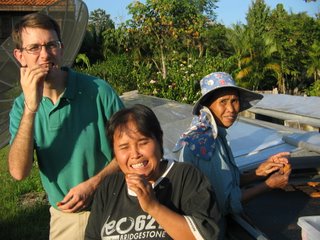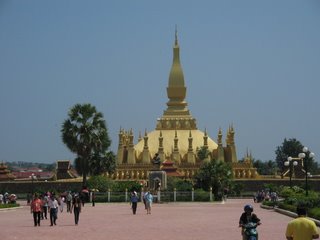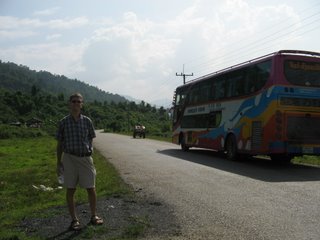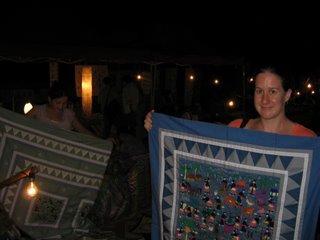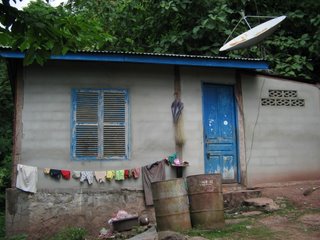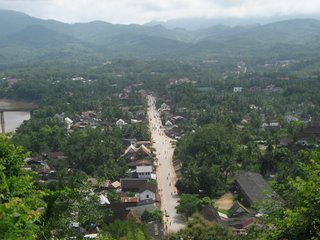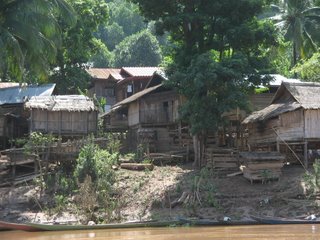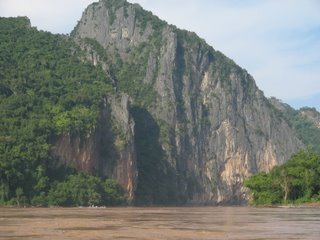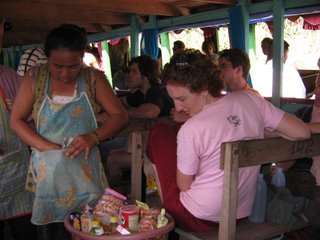


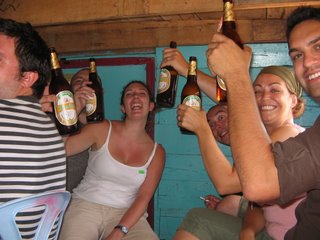
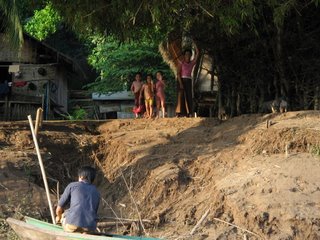
This is Chapter 3 of our Laos journey.
When Robert and I were planning our Laos vacation, we felt a bit guilty about sticking to "the beaten path." If you were to open the Lonely Planet Laos and read their suggested itinerary #1, you would find a nearly-exact description of our trip. Did this mean we would be missing out on the "real" Laos? Would we only see what had been specially tailored for tourists? Given our time and budget limits, though, it was the best choice for us. Besides, we rationalized, we’ve been living OFF the beaten path in Thailand for nearly two years now, so that must count for something. We were ready to be tourists for a change.
Nonetheless, we were taken aback as we watched our slow boat fill with North American and European backpackers. It got so full, in fact, that another boat had to be brought around, so that one could be filled too. Who were these people? Where did they get the time and money to sit on a boat in Laos for two days? (Were we not Peace Corps volunteers in Thailand, I’m quite sure we’d not have had the opportunity. There were, I should note, two other Peace Corps Thailand volunteers on the boat as well.) Had we come to Laos to see Laos, or to see Europe?
When you spend two days sitting on a small boat with the same group of people, though, you do get to know them some, and I will say that our fellow Mekong River travelers were a lively, yet friendly, bunch. They swapped travel plans and advice, looked at one another’s copies of the Lonely Planet, drank Beer Lao and saluted the fine scenery together. For our part, the daytime consumption of Beer Lao was out of our budget, but we did splurge on a package of Oreos when the boats pulled up to a tiny village and a family of vendors boarded with their baskets of goods. Yes, I ate Oreos on the Mekong River.
There were a few "real" Lao people on our boat, though, so occasionally we got the opportunity to dock at a village, usually a very small group of houses down close to the water, so they could get off. The houses themselves were a sight to see; made of rattan with a thatched roof, they were completely different from Thai houses. At each village, adults and children would hurry down to the water to look at the "farang" travelers and find out who was coming or going. There are no roads in this part of Laos, so the river traffic is their connection to the outside world.
Just as it was getting dark, we pulled into the town of Pak Beng for the night. We had been dreading Pak Beng, as I had read numerous blogs describing the bugs, rats, and drug pushers wandering its roads and guest houses. To our great surprise and delight, though, we immediately settled in at the Salika Guest House, which had screened windows, private bathrooms, and no rats anywhere, all for an affordable price. Amazed at our good fortune, we headed out to find food and ended up at Hasan Indian Restaurant, owned and operated by a nice young man from southern India. The food was good, and he spent a solid hour talking with us about what it was like being an Indian restaurant owner on the beaten path in Laos.
Feeling much pleased with ourselves for being such good travelers – surviving our first day on the wooden benches of the slow boat and the dark roads of Pak Beng – we retired to our room for a good night’s sleep.
















